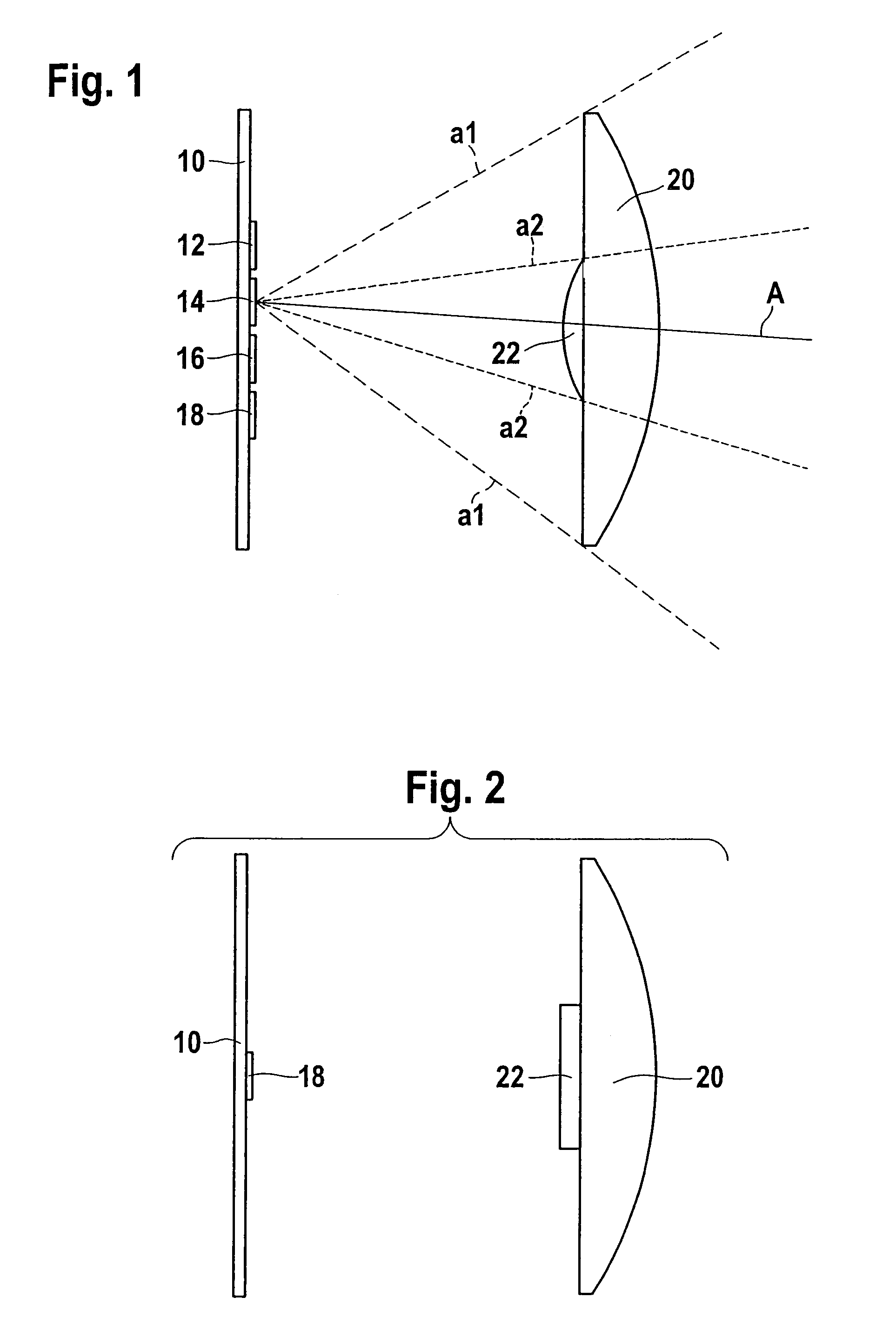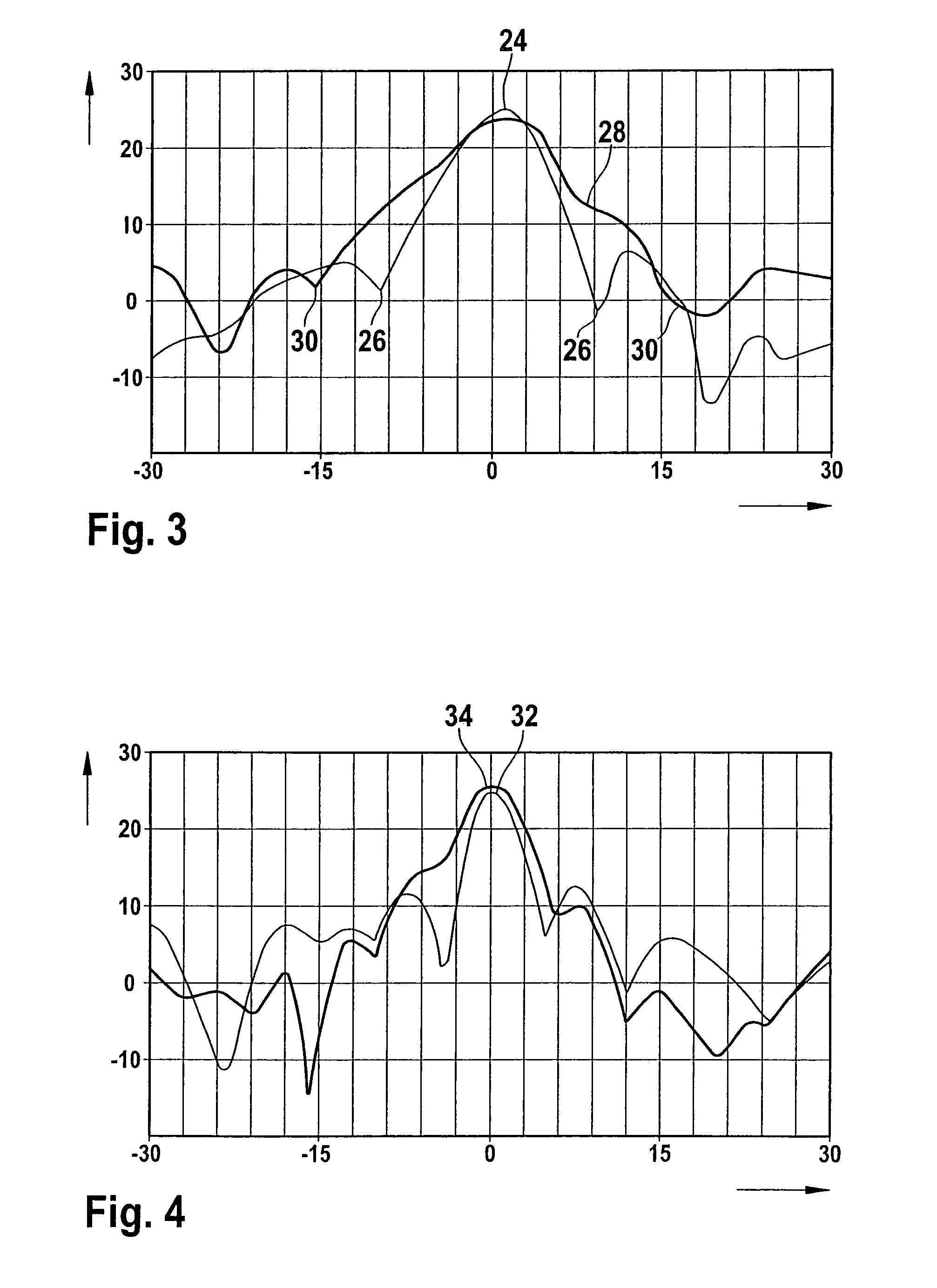Multi-beam radar sensor
a radar sensor and beam technology, applied in the direction of instruments, measurement devices, antennas, etc., to achieve the effects of reducing precision, reducing variance, and improving accuracy in azimuth angle determination
- Summary
- Abstract
- Description
- Claims
- Application Information
AI Technical Summary
Benefits of technology
Problems solved by technology
Method used
Image
Examples
Embodiment Construction
[0018]The radar sensor shown in FIG. 1 has four antenna elements (patches) 12, 14, 16, 18 mounted on a shared mounting plate 10. Spaced at a distance to mounting plate 10 is a collective lens 20 such as an aplanatic plano-convex lens whose planar side faces mounting place 10, collective lens 20 having a refractive effect for radar radiation. The radiation emitted by all four antenna elements passes through collective lens 20 and is focused by it.
[0019]In the radar sensor examined in this instance by way of example, a monostatic antenna principle is realized, i.e., each antenna element 12 acts both as transmit antenna and as receiving antenna. As a consequence, the radiation reflected by a radar sensor, which radiation was emitted by a specific antenna element, is also refocused by collective lens 20 in the direction of the particular antenna element, where it is received.
[0020]Since antenna elements 12, 14, 16, 18 are uniformly offset with respect to each other in the horizontal dir...
PUM
 Login to View More
Login to View More Abstract
Description
Claims
Application Information
 Login to View More
Login to View More - R&D
- Intellectual Property
- Life Sciences
- Materials
- Tech Scout
- Unparalleled Data Quality
- Higher Quality Content
- 60% Fewer Hallucinations
Browse by: Latest US Patents, China's latest patents, Technical Efficacy Thesaurus, Application Domain, Technology Topic, Popular Technical Reports.
© 2025 PatSnap. All rights reserved.Legal|Privacy policy|Modern Slavery Act Transparency Statement|Sitemap|About US| Contact US: help@patsnap.com



